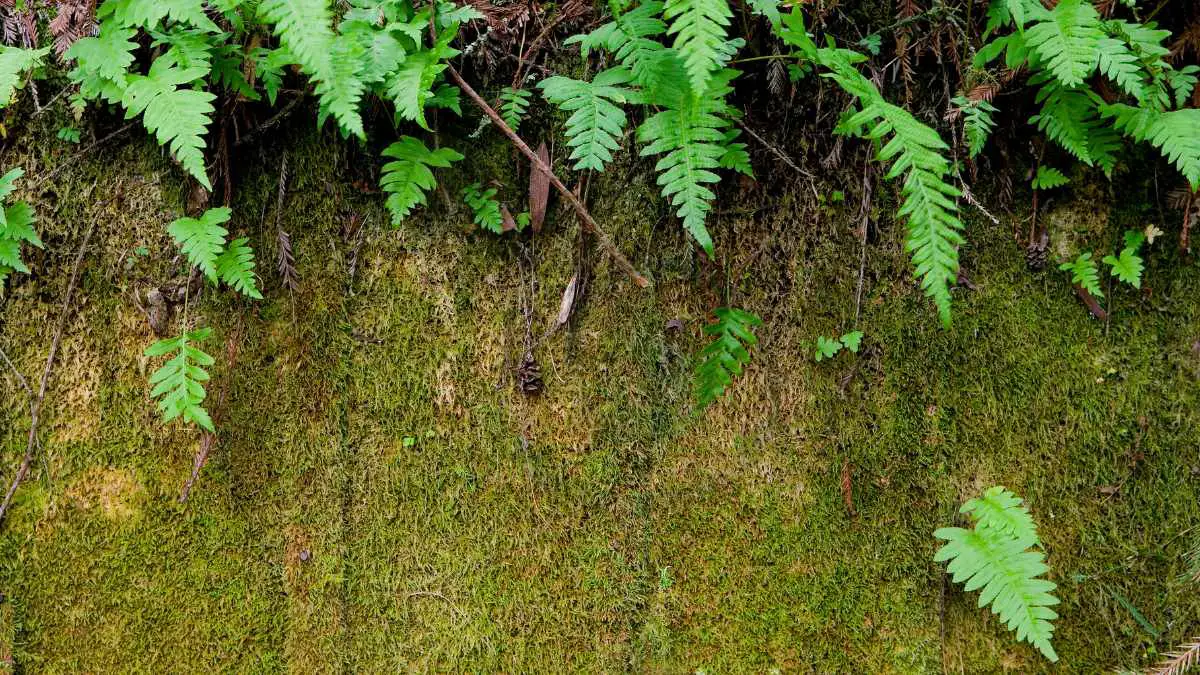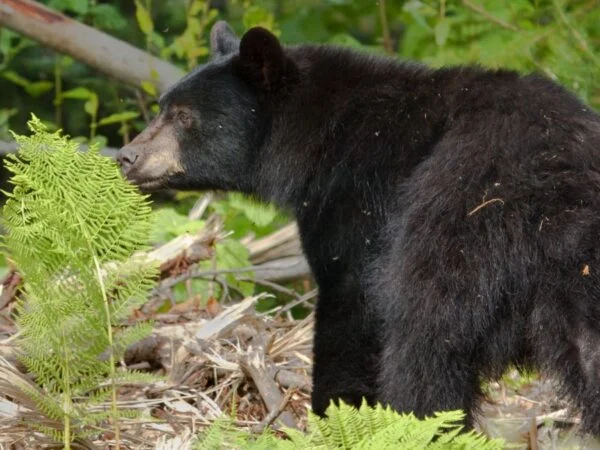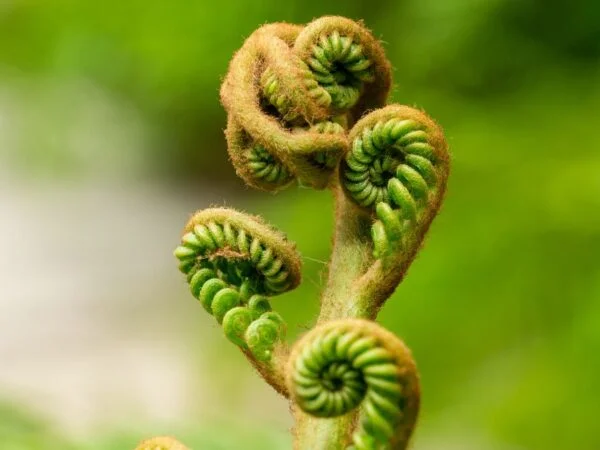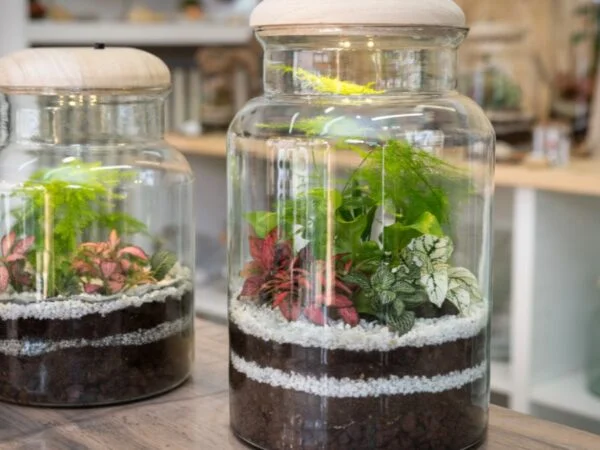Are you wondering, "How are mosses and ferns different?" You're in the right place! Let's explore the distinctions between these two types of plants and gain a deeper understanding.
Mosses and ferns belong to distinct groups of plants known as bryophytes and pteridophytes, respectively. While both are non-flowering plants, they exhibit fundamental differences in their reproductive structures, habitat preferences, and overall morphology. Mosses reproduce via spores contained within capsules atop stalks, while ferns reproduce through spores found on the underside of their fronds. Additionally, mosses are typically smaller in size, lack true vascular tissue, and thrive in moist environments, such as forests, whereas ferns are larger, possess vascular tissue for water and nutrient transport, and can adapt to various habitats ranging from tropical rainforests to arid deserts.
Intrigued by the fascinating world of plant biology? There's much more to uncover about the unique characteristics, ecological roles, and evolutionary significance of mosses and ferns. Let's delve deeper into their diverse adaptations and contributions to the ecosystems they inhabit.
Key Takeaways
- Recognize the Structural Differences: Mosses and ferns, bryophytes and green plants, differ in their structures, with mosses lacking vascular tissues and producing spores in capsules while ferns have vascular tissues and reproduce through spores in sporangia.
- Understand the Life Cycle Variations: Mosses, bryophytes with dominant gametophyte stage, and ferns, vascular plants with dominant sporophyte stage, showcase distinct reproductive strategies.
- Note the Taxonomical Classification: Mosses, classified as bryophytes, belong to the division Bryophyta, while ferns, vascular plants with sporangia, are classified under the division Pteridophyta, highlighting their taxonomic distinctions.
- Compare Growth Habitats: Mosses, bryophytes, thrive in moist environments, often forming dense carpets, whereas ferns, vascular plants, prefer shaded areas with higher moisture levels, showcasing their habitat preferences.
- Explore Reproductive Strategies: Mosses, bryophytes, reproduce through spores released from capsules on stalks, while ferns, vascular plants, disperse spores from sporangia located on the undersides of fronds, indicating unique reproductive methods.
- Consider the Environmental Impact: Both mosses (bryophytes) and ferns (vascular plants) play crucial roles in ecosystems by stabilizing soil, retaining moisture, and contributing to biodiversity, emphasizing their environmental significance.
Understanding Mosses and Ferns
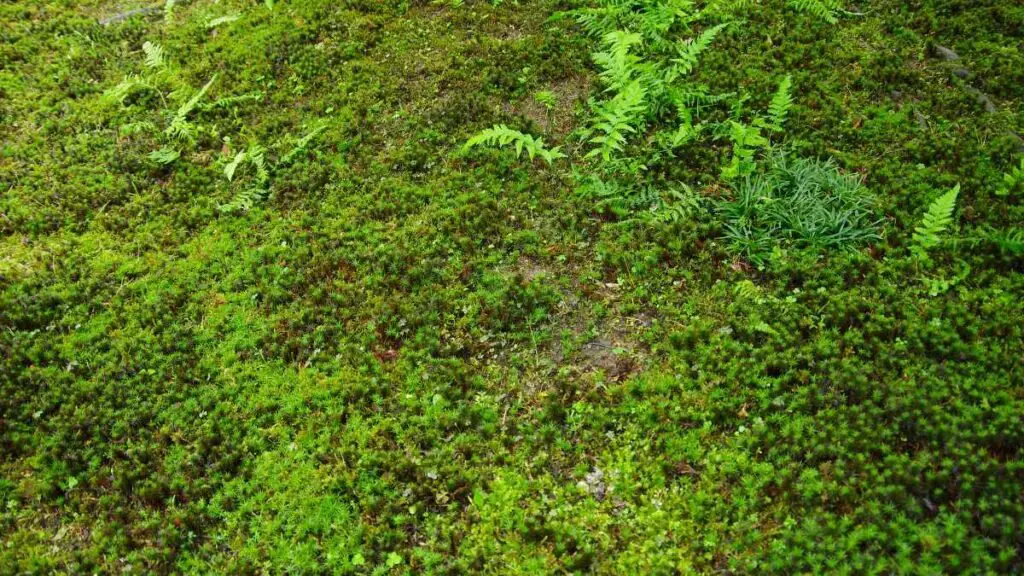
Basic Characteristics
Mosses, bryophytes, are small, non-vascular plants that lack true roots, stems, or leaves. They reproduce through spores and typically grow in damp environments such as forests or wetlands. Ferns, on the other hand, are vascular plants with well-developed roots, stems, and leaves. They reproduce via spores as well but are larger in size compared to mosses.
Mosses, bryophytes, have a simple structure with leaf-like structures called phyllids and rhizoids that anchor them to surfaces. In contrast, ferns have complex leaves known as fronds and can range in size from small to large depending on the species. Both bryophytes, such as mosses, and ferns play crucial roles in ecosystems by providing habitats for various organisms.
Habitat Diversity
Mosses, bryophytes, are commonly found in shady, moist areas like forests, bogs, and rocks due to their need for water for reproduction. Conversely, ferns thrive in diverse habitats ranging from tropical rainforests to temperate woodlands. Their ability to adapt to different environments makes them widespread across the globe.
Ferns prefer locations with higher humidity levels and well-draining soil for optimal growth. On the contrary, mosses can tolerate extreme conditions like low light levels and nutrient-poor soils. This adaptability allows mosses to colonize harsh environments where other plants struggle to survive.
Reproduction Overview
Mosses reproduce sexually through spores released from capsules at the tip of stalks called sporophytes. These spores disperse through the air until they find suitable conditions to germinate into new moss plants. Ferns also reproduce via spores produced on the underside of their fronds, which then develop into tiny gametophytes before maturing into new fern plants.
Both mosses and ferns rely on external factors like wind or water for spore dispersal to new locations conducive for growth. This reproductive strategy enables them to propagate and establish populations in various habitats worldwide.
Structural Differences
Moss Anatomy
Mosses lack vascular tissues found in ferns, which are responsible for water and nutrient transport. They have simple structures with rhizoids for anchorage instead of true roots. The reproductive organs in mosses are gametophytes, contrasting with the sporophyte dominance in ferns.
Fern Anatomy
Ferns possess specialized vascular tissues known as xylem and phloem, enabling efficient water and nutrient transportation. Their roots, stems, and leaves, as well as fern allies, exhibit more complex structures compared to mosses. Ferns reproduce through spores released from their sporangia, a feature absent in mosses.
Vascular Tissues
Mosses lack xylem and phloem, crucial for water and nutrient transport within plants. In contrast, ferns have well-developed vascular tissues that facilitate the movement of fluids throughout the plant body. This key structural difference influences their growth patterns and ecological adaptations.
Life Cycle Variations
Moss Life Cycle
Gametophyte Dominance
Mosses have a unique life cycle where the gametophyte phase is dominant. This means that the gametophyte generation is the most visible and long-lasting stage in their life cycle. The gametophyte produces both sperm and eggs, allowing for sexual reproduction to occur.
The gametophyte of mosses plays a crucial role in absorbing water and nutrients from the environment. This phase is essential for the survival and reproduction of moss species. Unlike ferns, where the sporophyte is more dominant, mosses showcase a distinctive emphasis on their gametophyte stage.
- Mosses exhibit strong adaptability due to their gametophyte dominance.
- The extended presence of the gametophyte ensures successful reproduction in various habitats.
Spore Formation
Another significant aspect of the moss life cycle is spore formation. After fertilization, mosses develop sporangium structures that contain spores. These spores are released into the environment and dispersed by wind or water, enabling them to colonize new areas and continue their life cycle.
The process of spore formation in mosses is crucial for their dispersal and colonization abilities. It allows them to propagate and establish new populations in diverse environments, contributing to their ecological significance.
- Spore formation in mosses facilitates their dispersal over long distances.
- The ability to form spores enhances the reproductive success and genetic diversity of moss species.
Fern Life Cycle
Sporophyte Dominance
In contrast to mosses, ferns exhibit sporophyte dominance in their life cycle. The sporophyte generation is more prominent and longer-lived compared to the gametophyte phase. This dominance is evident in ferns' characteristic fronds that produce spores for reproduction.
Ferns rely heavily on their sporophyte phase for growth, development, and reproduction. The sporophytes of ferns are responsible for producing spores through specialized structures called sori located on the underside of fronds.
- Ferns demonstrate strong reproductive capabilities through their sporophyte dominance.
- The prevalence of sporophytes ensures efficient spore production and dispersal in fern species.
Fertilization Process
Ferns undergo a unique fertilization process involving swimming sperm. During fertilization, swimming sperm from male gametophytes need moisture to reach female gametophytes for fertilization to occur. This dependence on water for sexual reproduction distinguishes ferns from other plant groups like gymnosperms or angiosperms.
The fertilization process in ferns highlights their adaptation to moist environments conducive to sperm motility and successful fertilization. This mechanism contributes to the reproductive success and diversity of fern populations worldwide.
- The requirement for water during fertilization underscores ferns' preference for moist habitats.
- Swimming sperm enable ferns to achieve effective fertilization and ensure genetic variation within populations.
Taxonomical Classification
Moss Classification
Mosses belong to the division Bryophyta, a group of non-vascular plants without true roots, stems, or leaves. They reproduce via spores and lack specialized tissues for water and nutrient transport. Mosses typically grow in damp environments like forests and bogs.
- Mosses are small plants with leaf-like structures called phyllids.
- They play crucial roles in soil formation and moisture retention.
- Mosses are sensitive to pollution levels, making them bioindicators of environmental health.
Fern Classification
Ferns fall under the division Pteridophyta, characterized by vascular tissues that transport water and nutrients. Their life cycle involves both gametophyte and sporophyte stages. Ferns reproduce via spores released from their undersides.
- Ferns have large fronds or leaves that unfurl as they grow.
- They thrive in moist, shaded areas like rainforests and riverbanks.
- Ferns have ancient origins dating back millions of years.
Growth Habitats Compared
Moss Habitats
Mosses are small, non-vascular plants that thrive in damp and shady environments. They can be found growing on rocks, soil, or tree bark. Mosses prefer locations with high humidity levels to support their growth. These plants play a crucial role in retaining moisture in the ecosystem by absorbing water from their surroundings. Due to their ability to grow in various habitats, mosses are commonly seen in forests, wetlands, and even urban areas.
- Thrive in damp and shady environments
- Grow on rocks, soil, or tree bark
- Play a crucial role in retaining moisture in the ecosystem
Fern Habitats
Ferns, on the other hand, are vascular plants that reproduce via spores instead of seeds. They typically grow in moist and shaded areas, such as forests or along riverbanks. Ferns require a constant water supply to support their growth and reproduction. These plants are commonly found in regions with moderate temperatures and high humidity levels. Ferns contribute to the ecosystem by providing habitat for various insects and small animals.
- Reproduce via spores instead of seeds
- Grow in moist and shaded areas
- Provide habitat for various insects and small animals
Reproductive Strategies
Moss Reproduction
Mosses reproduce both sexually and asexually. In sexual reproduction, male sperm swim through a film of water to reach female eggs. This process results in the formation of spores that grow into new moss plants. Asexual reproduction occurs through fragmentation, where parts of the plant break off and develop into new individuals.
The reproductive cycle of mosses is dependent on moisture. For sexual reproduction, water is essential for the movement of sperm to fertilize eggs. The presence of water also facilitates spore dispersal, ensuring the survival and spread of moss populations. Mosses typically produce spore capsules that release spores when conditions are suitable for growth.
Fern Reproduction
Ferns reproduce through spores, which are produced in structures called sporangia located on the underside of their leaves. These spores are released into the environment and can germinate into tiny gametophytes. Ferns have two distinct stages in their life cycle: the sporophyte stage, which is the familiar fern plant we see, and the gametophyte stage, which is smaller and less conspicuous.
Ferns require moisture for reproduction as well. The presence of water is crucial for ferns during fertilization because it allows sperm to swim to egg cells for fertilization to occur. Once fertilization happens, ferns develop new sporophytes that continue the reproductive cycle. Fern spores are dispersed by various means, such as wind or water, aiding in their distribution across different habitats.
Environmental Impact
Mosses in Ecosystems
Mosses play a crucial role in various ecosystems due to their unique characteristics. Absorb and retain water, contributing to moisture levels in the environment. This aids in preventing soil erosion by holding the soil together with their shallow roots.
Mosses act as insulation for the ground, protecting seeds and small plants from extreme temperatures. They also provide habitats for insects and microorganisms, supporting biodiversity within ecosystems. Due to their ability to fix nitrogen, mosses enrich the soil with essential nutrients.
- Retain water
- Prevent soil erosion
- Provide insulation
- Support biodiversity
- Enrich soil with nutrients
Ferns in Ecosystems
Ferns, on the other hand, have a significant impact on ecosystems through their diverse properties. Act as natural air purifiers by filtering pollutants and toxins from the atmosphere. Their extensive root systems help improve soil structure and prevent erosion.
Moreover, ferns serve as food sources for various animals, contributing to the food chain's stability. They also provide shelter for wildlife and create microclimates that support different species' survival. The presence of ferns indicates a healthy ecosystem with balanced environmental conditions.
- Filter pollutants
- Improve soil structure
- Food sources for animals
- Provide shelter for wildlife
- Create microclimates
Practical Uses and Importance
Moss Applications
Mosses, with their natural ability to retain moisture, are utilized in various practical applications. In gardening, they are valued for their role in soil erosion prevention. Mosses play a crucial part in ecosystem restoration projects by aiding in soil stabilization and promoting plant growth.
- Mosses are commonly used in floral arrangements due to their unique texture and appearance.
- They are also employed in traditional medicine for their potential healing properties.
Fern Applications
Ferns, on the other hand, have distinct applications that set them apart from mosses. With their aesthetic appeal and diverse leaf shapes, ferns are popular choices for indoor and outdoor landscaping. In addition to their ornamental value, ferns serve as natural air purifiers by filtering toxins from the air.
- Ferns are often used as decorative elements in homes and offices.
- Some fern species have culinary uses, adding flavor and nutrients to dishes.
Conservation and Challenges
Threats to Mosses
Mosses face several threats that endanger their existence in various ecosystems. Habitat destruction due to urbanization, agriculture, and deforestation is a primary threat. This destruction disrupts the delicate balance mosses rely on for survival.
pollution poses a significant threat to moss populations. Air pollution from industrial activities can harm mosses by altering the pH of their environment. Furthermore, water pollution from agricultural runoff or chemical spills can have detrimental effects on moss communities.
Threats to Ferns
Ferns also encounter challenges that impact their growth and survival in the wild. One major threat is habitat loss caused by human activities such as logging and land development. This loss of habitat reduces the available space for ferns to thrive.
Moreover, climate change presents a significant threat to fern populations worldwide. Changes in temperature and precipitation patterns can disrupt the optimal conditions required for fern growth. Extreme weather events like droughts or floods can also negatively impact fern habitats.
Closing Thoughts
You've delved into the world of mosses and ferns, uncovering their structural disparities, life cycle nuances, and ecological significance. Understanding these botanical wonders not only enriches your knowledge but also highlights the intricate balance of nature. From their taxonomical classification to growth habitats and reproductive strategies, each aspect sheds light on the unique roles these plants play in our environment.
As you reflect on the practical uses, importance, conservation efforts, and challenges faced by mosses and ferns, consider how you can contribute to preserving these vital species. Whether through advocacy, sustainable practices, or simply appreciating their beauty in the wild, your actions can make a difference in safeguarding these ancient plants for generations to come.
Frequently Asked Questions
How do mosses and ferns differ in terms of structure?
Mosses are small, non-vascular plants with simple leaves and lack specialized tissues for water conduction. In contrast, ferns are vascular plants with complex leaves, stems, and roots that have specialized tissues for water transport.
What are the key variations in the life cycles of mosses and ferns?
Mosses exhibit alternation of generations where they alternate between gametophyte and sporophyte stages. Ferns, on the other hand, have a dominant sporophyte stage in their life cycle with independent gametophytes.
How are mosses and ferns classified taxonomically?
Both mosses and ferns belong to the plant kingdom Plantae. Mosses are classified under Bryophyta (moss division), while ferns fall under Pteridophyta (fern division) within the plant kingdom.
Where do mosses and ferns typically grow in comparison to each other?
Mosses thrive in moist environments like forests, bogs, or rocks due to their need for constant moisture. Ferns prefer shaded areas with higher humidity levels such as forests, swamps, or tropical regions for optimal growth.
What are the primary differences in the reproductive strategies of mosses and ferns?
Mosses reproduce through spores produced by capsules on sporophytes. Ferns reproduce via spores released from structures called sori located on the underside of their fronds. Both rely on water for fertilization.
Image Source: Paid image from CANVA

